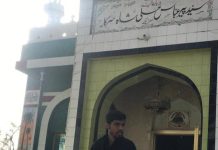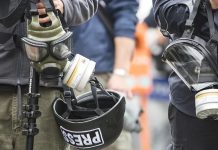Peshawar: Thousands of schools in Khyber Pakhtunkhwa province lack basic facilities like water, electricity and toilets, the annual statistical report for government schools reveals.
The latest Education Management Information System (EMIS) annual report 2014-15 says 4473 schools in the province are without boundary walls, 8219 schools without water supply,10213 schools without electricity and 3900 schools are without toilets.
The report covers primary, middle, high and higher secondary schools of all 25 districts of KP. Schools run out of mosques and madrassa schools are not included.
Education officials say scores of other schools grapple with challenges like shortage of teachers, classrooms, furniture, lack of computer and science labs, for which no official figures are available.
“The Pakistan Tehreek-e-Insaf government in Khyber Pakhtunkhwa claims to have brought revolutionary changes in the education sector in KP but the reality of public sector schools tells a different story,” said an official in the education department, not named because he was not authorized to speak to media. “Schools in different districts of KP including the provincial metropolis of Peshawar lack facilities which make them unsuitable for learning.”
The Government High School (for boys) at Larama in Peshawar is one such school. Situated in suburbs of Peshawar on Charsadda road, the school faces acute shortage of furniture and teaching staff.
“There is not a single piece of furniture for 650 students of the primary section of school,” Muhammad Tahir Khan, a teacher at primary section of the school, told News Lens.
“As a result, students have to sit on floor while attending classes.”
Khan said that the primary section also faced shortage of teachers and classrooms. With only eleven classrooms available for 650 students, classrooms were overcrowded. Some classes had more than 100 students in a room against the government’s standard of one teacher for 40 students.
“Teaching becomes a challenging task when you are teaching and overseeing crowded classes,” said Khan. “We only have nine teachers available to teach hundreds of students in the primary section alone.”
Tahir Khan said the problem of teachers’ shortage was hindering learning in the school. “It is an uphill task for teachers to focus individually on each student and teach effectively given the crowded classes.”
Citing reasons for lack of furniture, shortage of classes and other problems, Zarshad Ahmed, a member of the Parent Teacher Council (PTC) at the school, said government provided limited funds for PTCs of schools.
The schools out in the districts do not fare any better. In Mardan district, the Government Primary School No.3 in Garhi Ismail Zai, a remote area, lack furniture, teachers and classrooms for students.
Hashmat Khan, a teacher at the school, said they had only two teachers available for 130 students who sit on mats they bring from home due to lack of furniture.
“With only two classes, we have to accommodate students in the courtyard in extreme weather which makes both teaching and learning a daunting prospect,” said Hashmat Khan.
With the passage of 18th Amendment to the Constitution in 2010, education has become a provincial responsibility in Pakistan. According to the Human Rights Commission of Pakistan annual education report: “The share of education in the total provincial budget continued the downward trend in 2015-16, going down from 29.3% in 2013-14 to 26.4% in 2014-15 and 24.5% in 2015-16.”
However, the Directorate of Elementary and Secondary Education remains upbeat about the education sector in the province. Idrees Azam, a top official at DESE said it was taking measures on “war footing” in the province to treat the problems of education sector in the province aggressively.
Azam said an amount of PKR.21 billion had been allocated to provide facilities like extra classrooms, boundary walls, toilets and water in schools throughout the province. In the fiscal year 2015-16, he said, PKR.15 billion were spent on provision of facilities while PKR 6 billion were being spent in the current fiscal year.
Azam said that an average of PKR 0.7 million were being provided per classroom through PTCs and 4000 classrooms had already been built in different schools throughout the province.
Regarding shortage of classes, he said in the past primary schools in the province had two classrooms and two teachers but now the government was upgrading it to (at least) six classrooms and six teachers for each school. He said the first such school had been inaugurated in Kohat in early November.
He said the government was also mindful of the shortage of teachers in schools and a record number of teachers had been inducted in a short span of time. “More than 10,000 teachers have been hired by the government. By the end of 2018, no school in the province will face shortage of teachers.”
Azam said more than 83000 teachers will be trained in collaboration with the British Council and their training would start in December this year.
However, Malik Masood, Programme Manager at the Centre for Governance and Public Accountability, a non-profit working to improve governance, said the pace of work on schools was slow.
“Compared to other governments, there is relative improvement [in the education sector] but it doesn’t match up to the PTI’s claim of following an education emergency,” said Masood. “While there may be some progress towards certain indicators but to say they will all be achieved by the end of 2017 is a tall order, especially the provision of furniture which is a huge problem and needs lots of funding.”



